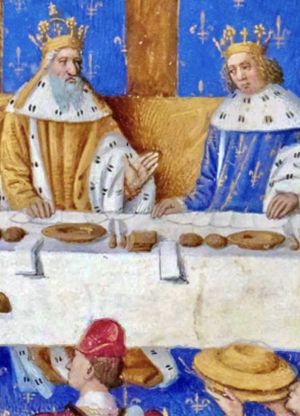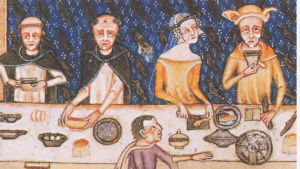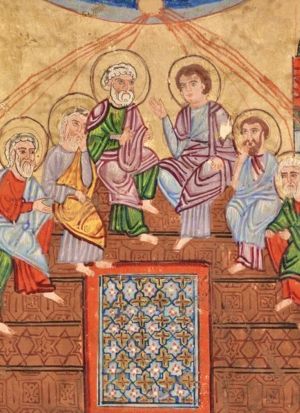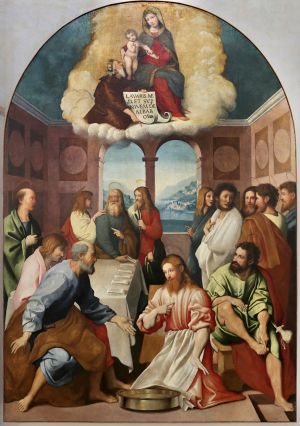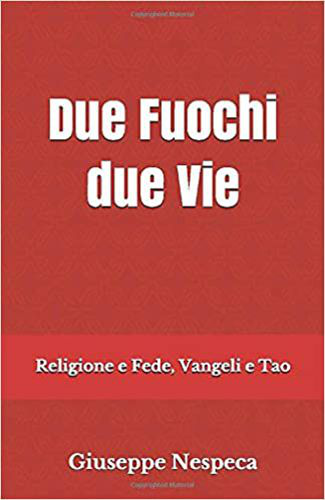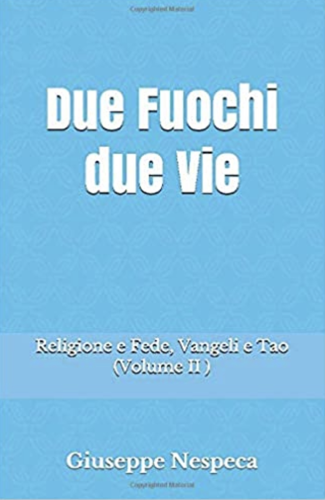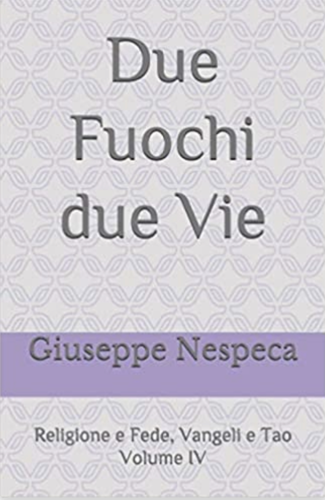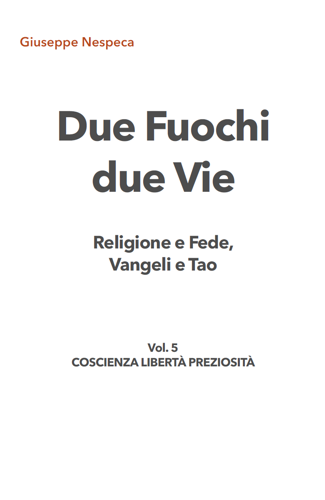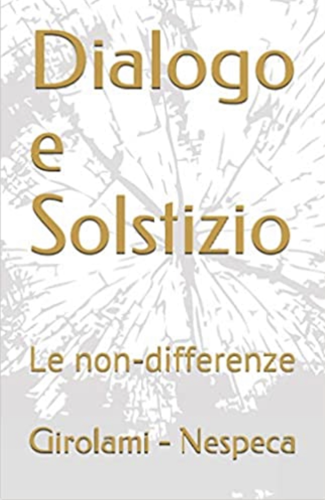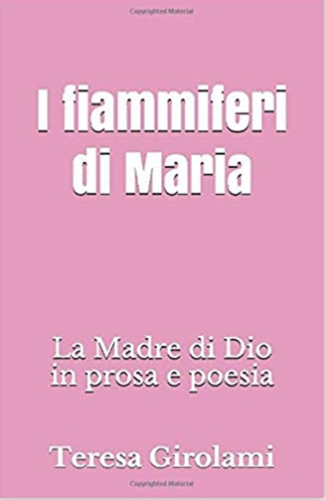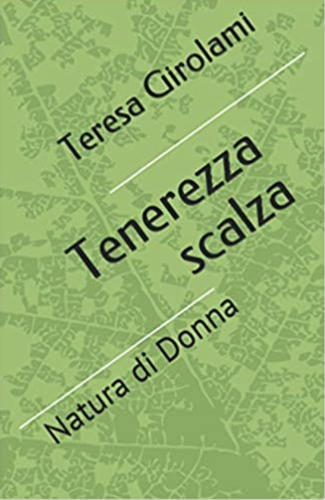
don Giuseppe Nespeca
Giuseppe Nespeca è architetto e sacerdote. Cultore della Sacra scrittura è autore della raccolta "Due Fuochi due Vie - Religione e Fede, Vangeli e Tao"; coautore del libro "Dialogo e Solstizio".
22nd Sunday in O.T. (year C)
22nd Sunday in Ordinary Time (year C) [31 August 2025]
May God bless us and may the Virgin Mary protect us. For many, the holiday season is coming to an end and we are preparing to resume our normal rhythm of life. The Word of God comes to us with appropriate advice.
*First Reading from the Book of Sirach (3:17-18, 20, 28-29 NV 3:19-21, 30, 31)
This text becomes clearer if we begin reading it from the end: 'The wise heart meditates on parables, and an attentive ear is what the wise man desires' (v. 29). When the Bible speaks of wisdom, it means the art of living happily. Being a 'wise man' is the ideal of everyone in Israel: such a small people, born as a 'people' only at the time of the exodus from Egypt, has the privilege, thanks to Revelation, of knowing that 'all wisdom comes from the Lord' (Sir 1:1), in the sense that only God knows the mysteries of life and the secret of happiness. It is therefore to the Lord that we must ask for wisdom because, in his sovereign freedom, he chose Israel to be the repository of his wisdom. Yeshua Ben Sira (Jesus son of Sira), the author of the book, makes wisdom itself speak as if it were a person (cf. Sir 24:8); Israel seeks wisdom every day (cf. Sir 51:14) and, according to Psalm 1, finds its happiness in it: ' Blessed is the man who meditates on the law of the Lord day and night (1:2). 'Day and night' means always. Those who seek will find, Jesus will later say: but one must seek, that is, recognise that one does not possess everything and is always in need of something. Ben Sira had opened a school of theology (beth midrash) in Jerusalem around 180 BC and, to promote it, he said: "Come to me, you who are uneducated, and dwell in my school" (Sir 51:23). A true son of Israel knows that wisdom comes from God, allows himself to be taught by Him, meditates on the maxims of wisdom, and his ideal is an ear that listens. Israel has treasured this lesson so much that it recites the "Shema' Israel, Hear, O Israel" (Deut 6:4) several times a day. An "open ear" means listening to advice, instructions, commandments; the proud, on the other hand, believe they know everything and close their ears, but they forget that if the house has its shutters closed, the sun cannot enter. We read in verse 28: "There is no remedy for the miserable condition of the proud, for the plant of evil is rooted in them." In other words, the proud are incurably sick because, being full of themselves, they close their hearts. The parable of the Pharisee and the tax collector (Lk 18) is interesting in this regard: the tax collector limited himself to being true because the humble have their feet on the ground and therefore recognise themselves as poor and rely only on God. The Pharisee, self-sufficient in everything, returned home as he had come, while the tax collector was transformed. Isaiah describes the joy of these humble people: ' The humble will rejoice more and more in the Lord, and the poor will exult because of the Holy One of Israel" (Isaiah 29:19), and Jesus will exclaim: "I praise you, Father... because you have hidden these things from the wise and intelligent and revealed them to the little ones" (Matthew 11:25 // Luke 10:21). God can accomplish great things with the humble, making them servants of his plan, as with Moses, his great and tireless servant, whose secret, as we read in the book of Numbers, was that he was a very humble man, more than anyone else on earth" (12:3), and Jesus, the Servant of God, says of himself: "I am gentle and humble in heart" (Mt 11:29), while Paul writes: "If I must boast, I will boast of my weakness... The Lord has told me... for my power is made perfect in weakness." (2 Cor 11:30; 12:9). Ultimately, humility is more than a virtue: it is a vital minimum and a prerequisite.
*Responsorial Psalm (67/68)
"The Lord is his name" (v. 5), this very short phrase sets the tone for the whole: "Lord" is the tetragrammaton (YHWH) revealed to Moses, which expresses God's permanent presence among his people: "Ehyeh-Asher-Ehyeh" (I am who I am). And since He surrounds us at all times with His care, each of the verses can be read on several levels, and the richness and complexity of this psalm lies in being able to sing it in every age and feel involved. "The righteous rejoice, they exult before God and sing for joy. Sing to God, praise His name. Lord is His name" (vv. 4-5). David also dances before the Ark, but here we are talking about the joy of the people freed from Egypt: Moses' song after the crossing of the sea; Miriam, sister of Aaron (and Moses), took up the tambourine and all the women went out after her, dancing and playing the tambourine. Later, during the Exodus, there were many reasons to sing and dance. This emerges in the following verses: 'He brings out the prisoners with joy' (7). 'You have poured out abundant rain, O God, you have strengthened your weary inheritance, and your people have dwelt in it, in that which, in your goodness, you have made secure for the poor, O God' (10-11). Here, different levels of interpretation overlap, but every allusion to liberation always refers to the exodus from Egypt, the return from Babylonian exile, and other liberations, that is, every time that individuals or entire peoples advance towards greater justice and freedom and, finally, the definitive liberation that we still await. "He brings out the prisoners with joy": for us Christians, this is a reminder of Christ's Resurrection, thinking of our own. "You have poured out abundant rain": this reference to the Exodus offers several interpretations: the manna in the desert (cf. Ex 16:4, 13-15) and most likely also the beneficial rain on which all life depends, because without "abundant rain" the promised land does not flow with "milk and honey". In the past, there have been memorable droughts (and therefore famines): the seven years of famine that led Jacob's sons and their father to go down to Egypt to Joseph; the drought in the time of Elijah (1 Kings 17-18) with the harsh confrontation between Elijah and Queen Jezebel, worshipper of Baal, the god of fertility, storms and rain; the famine under Emperor Claudius when the Christian communities of the Mediterranean basin, regions not affected, were invited to provide financial assistance to the victims, and St Paul called on the community of Corinth for their slowness in giving their contribution (cf. 2 Cor 8-9). Finally, we too have reason to give thanks for the new manna, our daily bread: Jesus Christ, the living bread that came down from heaven (Jn 6:48-51).
*Second Reading from the Letter to the Hebrews (12:18-19, 22-24a)
Addressed to Christians of Jewish origin, the Letter to the Hebrews aims to place the New Covenant in its proper perspective in relation to the Old Covenant. With the earthly life, passion, death and resurrection of Christ, the entire past is considered by Christians as a necessary stage in the history of salvation, but now superseded, though not annulled, so that between the First and the New Covenant there is both continuity and radical novelty. In favour of continuity are elements familiar to Israel: Sinai, fire, darkness, gloom, hurricane, trumpets, Zion, Jerusalem, names written in the heavens, judge and justice, covenant with language that evokes the entire spiritual experience of the people of the Covenant and certainly familiar to listeners at that time. (cf. Ex 19:16-19; 20:18, 21; Dt 4:11). Israel feeds on these stories as titles of glory of the people of the Covenant. However, the Letter to the Hebrews seems to downplay this memorable experience because that Covenant has now been completely renewed. Moses approached God, but the people remained at a distance; in the New Covenant, the baptised are introduced into a true intimacy with God, and the author describes this new spiritual experience as entering a new world of beauty and celebration (cf. vv. 22-24). The "fear of God" in the Old Testament was fear in the face of manifestations of power, so much so that the people came to ask not to hear God's voice anymore, but later, little by little, their relationship with God was transformed and fear became filial trust. Those who knew Jesus discovered in him the true face of the Father: "The Spirit himself testifies to our spirit that we are children of God" (Rom 8:15-16). Jesus, therefore, fully fulfils the role of mediator of the New Covenant and allows all the baptised to approach God and become "firstborn" (in the sense of "consecrated"). Thus, the ancient promise to Moses on Sinai: "If you will listen to my voice and keep my covenant, you shall be my special possession among all peoples... you shall be to me a kingdom of priests and a holy nation" (Ex 19:4) is finally fulfilled in Christ, and for this reason we too "let us then approach the throne of grace with confidence" (Heb 4:16).
*From the Gospel according to Luke (14:1a, 7–14)
In Luke's Gospel, there are often scenes of meals: at the home of Simon the Pharisee (7:36); at Martha and Mary's house (10:38); again at the home of a Pharisee (11:37); at Zacchaeus' house (19); the Passover meal (22). The importance that Jesus attached to meals even led his detractors to say, "Here is a glutton and a drunkard" (Lk 7:34). Three of these meals take place in the homes of Pharisees and become occasions for disagreement. During the first, at Simon's house (Lk 7:36), a woman of ill repute threw herself at Jesus' feet and, contrary to all expectations, he took her as an example. The second (Lk 11:37) was also the occasion for a serious misunderstanding, this time because Jesus did not wash his hands before sitting down at the table: the discussion degenerates and Jesus takes advantage of it to launch into a severe diatribe, so much so that the episode ends with the scribes and Pharisees beginning to rage against him, setting traps for him to catch him in the act (cf. Lk 11:53). Today, the third meal in the house of a Pharisee takes place on the Sabbath, a day of rest ('Shabbat' in Hebrew means to cease all activity) and celebration: a memorial of the creation of the world, the liberation of the people from Egypt and the anticipation of the great feast of the Day when God will renew the entire creation. The Sabbath included a solemn meal, often an occasion to invite fellow believers, even though the ritual prohibitions of the Law were so numerous that, for some, observance of the prescriptions had obscured the essential: fraternal charity. On that Sabbath, Jesus had healed a man suffering from dropsy (a scene that does not appear in our liturgical reading: cf. Lk 14:2-6), and lively discussions ensued because Jesus was accused of breaking the Sabbath. Here I pause and ask a question: are the relations between Jesus and the Pharisees always a clash? In truth, they are a mixture of sympathy and severity: sympathy because their religious movement, born around 135 BC out of a desire for conversion, was esteemed, and the name 'Pharisee', which means 'separated', expressed the rejection of any political compromise or laxity in religious practice, two problems that were very present at the time. At the time of Christ, their fervent faith and courage in respecting tradition were appreciated, not in a pejorative sense, but as a treasure received from their fathers and transmitted in the form of precepts concerning the smallest details of daily life. These rules, written down after 70 AD, resemble those of Jesus himself and were therefore so respectable that Jesus did not refuse to speak with them, as demonstrated by these meals and the meeting with Nicodemus (cf. Jn 3). Under Herod the Great (39-4 BC), six thousand of them, in order to remain faithful to the Law, refused to swear allegiance to Rome and Herod and were punished with heavy fines. However, their strict observance sometimes led to excessive self-confidence and contempt for others, and Jesus reacted to this because it created certain ambiguities and deviations, well symbolised in the parable of the speck and the log (Mt 7:3-5; Lk 6:41-42). In today's text, Jesus invites us not to occupy the first places, not to recall a norm of good manners and philanthropy, but, in the manner of the prophets, he seeks to open their eyes before it is too late, because excessive self-satisfaction can lead to blindness. And so, precisely because they are people of value and faithful practitioners of the Jewish religion, Jesus unmasks the risk of their contempt for others by reminding them that to enter the Kingdom, they must become like children (cf. Lk 9:46-48; Mt 18:4), welcoming and respecting them without expecting anything in return and, indeed, opening one's heart to the poor, the crippled, the lame and the blind (v. 13). This is a lesson for the Pharisees of yesterday and today, bearing in mind what St James writes: never mix personal favouritism with faith in Christ (cf. Jas 2:1).
+ Giovanni D'Ercole
Three Commitments, little adrenaline. And worrying about big numbers
Head of the table at the Eucharist? It is the Humble who establish happy relationships
21st Sunday in O.T. (year C)
XXI Sunday in Ordinary Time (year C) [24 August 2025]
May God bless us and the Virgin protect us. It is useful in these times to reread these biblical texts in light of what is happening in the Middle East.
*First Reading from the Book of the Prophet Isaiah (66:18-21)
The prophets speak in the name of God, and their listeners know this well, but when they want to emphasise the importance of their statements, they remind them that these are the very words of the Lord, and therefore something very important. In this passage, there are at least two great announcements: the universal dimension of God's plan, 'I will come to gather', and the role of the small remnant of believers, 'the survivors', those who have escaped and who, amid general discouragement, preserve their faith. While the first Isaiah or Micah (8th century BC) announced only the salvation of the 'little remnant of Israel', during and after the exile (6th century) Israel discovered the universal dimension of God's plan and learned to consider its election not as an exclusive privilege but as a vocation. This is a new discourse because it highlights the missionary role that God entrusts to Israel in the service of all humanity, the universal dimension of God's plan: "I will gather all nations and all languages" and even more surprising: "they will come and see my glory" (v. 18). The term glory indicates the splendour of God's presence (literally in Hebrew 'weight'). God does not need us to glorify him; rather, it is we who become happy when we live in a covenant of love with him. "They will see my glory" means recognising Him as the only God, freeing humanity from all forms of idolatry. And the text continues: "I will send their survivors to the farthest nations... these messengers will proclaim my glory among the nations... they will bring all your brothers from all the nations as an offering to the Lord... to my holy one in Jerusalem" (v. 20). Here is the fulfilment of the vocation of the chosen people: to be a light to the nations, so that salvation may reach to the ends of the earth (cf. Is 49:6). This is also the vocation of the Church, the people of God called to bear witness to the truth of God in the world, even if it does not replace Israel: to proclaim the glory of God to all peoples, to bear witness to the Gospel that enlightens life: 'I will put my sign upon them' (v. 19), and in this light we understand what Jesus will say: 'When I am lifted up from the earth, I will draw all people to myself' (Jn 12:32). The last sentence is a third important announcement: not only will the peoples draw near to the Lord, but 'I will take priests and Levites from among them' (v. 21), which means that the usual conditions for the priesthood will no longer be required and every human being can draw near to the living God. We can understand why, a few verses before this Sunday's reading, Isaiah invited all those who love Jerusalem to rejoice because the Lord will make "peace flow towards it like a river, and the glory of the nations like a torrent" (Isaiah 66:10-12).
Some notes *St Augustine writes: 'Who would be so foolish as to believe that God needs the sacrifices offered to him? The worship given to God benefits man and not God. It is not the source that benefits us if we drink from it, nor the light if we see it' (The City of God, X, 5-6).
*In Third Isaiah (the prophet after the exile), we find the theology of the "saving remnant," of which we read a trace in Psalm 39/40: "Many will see and fear and trust in the Lord" (Ps 39/40:4), which can be compared to the announcement we find here in Isaiah (vv. 20-21).
*In the Bible, nations are not always spoken of in a positive way, and the term is sometimes loaded with decidedly negative meanings: The book of Deuteronomy, for example, speaks of the "abominations of the nations" (18:9-12) because of their religious practices in general and human sacrifices in particular. In biblical pedagogy, the chosen people are guided to remain faithful to God, to discover the face of the one God, avoiding all contact with nations at risk of idolatrous contagion. This positive vision is already present in Abraham: "All the families of the earth shall be blessed in you" (Genesis 12:3). With firmer faith, Israel will discover the universalism of God's plan, gradually understanding that it is the older brother, not the only child, with the role of opening the way to its God for all humanity: if God is the only true God, he is the God of all.
Responsorial Psalm 116/117
This psalm is shorter than the psalter and could be summed up in a single word: Alleluia, the last word of the psalm, but also the first, since Praise the Lord (v. 1) is equivalent to Alleluia: 'Allelu' is an imperative: Praise, and 'Ia' is the first syllable of God's name. The purpose of the entire psalter, which means 'Praises' (in Hebrew Tehillim), derives from the same root as Alleluia. Here is the rabbis' commentary on Alleluia: 'God has led us from slavery to freedom, from sadness to joy, from mourning to celebration, from darkness to splendour, from slavery to redemption. For this reason, we sing Alleluia before him." "God has led us from slavery to freedom": this is what God has done for his people, but it is also God's plan for all humanity. The salvation of his people is the beginning and promise of what God will do for all humanity when he announced to Abraham: "All the families of the earth will be blessed in you" (Gen 12:3). Solomon had already dreamed of this: 'All the peoples of the earth will recognise your name and worship you, as your people Israel do' (1 Kings 8:41-43; cf. the first reading). Hence the structure of this psalm, which is very simple but evocative: 'Praise God' (v. 1); "For he has shown his love" (v. 2). Looking more closely, we read: "Praise God, all you nations" (v. 1); For his work on behalf of his people: "For he has shown his love for us". Here the "for" is very important: when the nations see what God has done for us, they will believe. In other words, because God has proven himself by saving his people, other nations will be able to believe in him. The same reasoning is found in Psalm 39/40 (20th Sunday of the year C) where the psalmist says: "God has brought me out of the pit of death... seeing this, many will fear and put their trust in the Lord" (Ps 39/40:4). Similarly, Psalm 125/126 sings of the exile in Babylon: "Then it was said among the nations, 'The Lord has done great things for them'" (Ps 125/126:2). This idea is found several times in the prophets: when the people are in misfortune, other nations may doubt God's power. It is in this sense that Ezekiel dares to say that the exile in Babylon is a disgrace to God and even goes so far as to say that the exile of God's people "desecrated" God's name, while liberation, on the contrary, will be proof of his liberating power before all. This leads him to proclaim, in the midst of the Babylonian exile: "I will show the holiness of my great name, which has been profaned among the nations, which you have profaned among them; then the nations shall know that I am the Lord... when I have shown my holiness in you before their eyes" (Ezekiel 36:23; 36:36). Recognising God's Name in biblical language means discovering the God of tenderness and faithfulness revealed to Moses (Ex 34:6): tenderness and faithfulness that Israel has experienced throughout its history. This is the meaning of the second verse of the psalm: "His love for us is strong, and the Lord's faithfulness endures forever." One final observation: this psalm is part of the Hallel (from Psalm 112/113 to 117/118) and occupies a special place in the liturgy of Israel because it is recited after the Passover meal. Jesus himself sang it on Holy Thursday evening, and the Gospels of Matthew and Mark echo it (cf. Mt 26:30; Mk 14:26). We too can repeat: "He has shown his love for us" by listening to Jesus: "No one has greater love than this: to lay down one's life for one's friends" (Jn 15:13) and "God so loved the world that he gave his only Son, so that everyone who believes in him might not perish but have eternal life" (Jn 3:16).
Second Reading from the Letter to the Hebrews (12:5-7, 11-13)
The recipients of the Letter to the Hebrews, Christians going through a period of severe persecution, have already suffered greatly for their faith, as is clear in chapter 10:32-34. To console them and instil courage, the author tells them not to forget the exhortation addressed to them and delves into the Old Testament, taking up what the prophet Isaiah said to his compatriots exiled in Babylon: "Strengthen your limp hands and your weak knees" (v. 12). He speaks to them as if they too were living in exile and addresses the problem of suffering not to justify or explain it, but to give it meaning. He calls for perseverance, an indispensable virtue in times of trial when God, like a Father, shows his love even in seemingly absurd ways. The dominant image is therefore that of the pedagogical father of God present in the wisdom literature of the Bible, where suffering can become a journey, a test of the believer's faith, who knows that, whatever happens, God is silent, but is neither deaf nor indifferent. On the contrary, like a father, he accompanies us on this difficult path and helps us to emerge stronger from every evil. What you endure is therefore a 'correction' with references to the book of Proverbs: 'Do not despise the Lord's discipline, and do not resent his rebuke, for the Lord disciplines those he loves, as a father disciplines the child he delights in' (Pr 3:11-12). This theme was familiar to the early Christians, who knew well the book of Deuteronomy, which compared God to a teacher who accompanies the growth of those he educates (cf. Dt 8:2-5). Lived in trust in God, suffering can become an opportunity to bear witness to the hope and inner peace that the Spirit gives. Suffering can thus become a school in which we learn to live in the Spirit everything that happens because, as St. Paul writes, tribulation produces perseverance, perseverance a proven virtue, and proven virtue the hope that does not disappoint thanks to the love poured into our hearts through the Holy Spirit (cf. Rom 5:3-4). Suffering is therefore part of the human condition: even in such a situation, God entrusts us with the honour and responsibility of bearing witness to the faith, and if persecution is part of the journey of life, it is not because God wants it, but for reasons linked to human behaviour. When Jesus said that it was necessary for the Son of Man to suffer, he was not speaking of a demand from God, but of the sad reality of human opposition. St. Paul, addressing the early communities in Asia Minor, which were also persecuted, reminded them that we must enter the Kingdom of God through many tribulations (cf. Acts 14:22).
From the Gospel according to Luke (13:22-30)
Jesus is on his way to Jerusalem and, visibly, does not miss an opportunity to teach, but what he says is not always what one would expect. Here, for example, someone asks a question concerning salvation, and he does not answer directly: 'Lord, are there few who are saved?' (v. 23). The answer does not concern who will be saved, as if there were those who were chosen and those who were excluded in advance, but what is the condition for entering the kingdom: to pass through the door! "Strive to enter through the narrow door, for many, I tell you, will seek to enter and will not be able to" (v. 24). The image of the narrow gate is evocative and eloquent: someone who is excessively obese or laden with bulky packages cannot pass through a narrow gate unless they undergo a drastic weight-loss programme or decide to abandon all their baggage. The text that follows allows us to understand what spiritual obesity is and what baggage prevents us from passing through. Knocking at the door, they will say, 'We ate and drank in your presence, and you taught in our streets' (vv. 25-26). Here Jesus denounces the self-assurance of his interlocutors, who are convinced that, simply because they were born of the chosen people, they are entitled to salvation and that the door will open for them. Jesus, however, points out that the door is the same for everyone, so why will they not be able to pass through it? Indeed, the master will specify: "I do not know where you are from. Depart from me, all you who practise lawlessness' (v. 27). It is true that Jesus is one of them, that he ate and drank with them and taught among them; it is true that their ancestors Abraham, Isaac, Jacob and all the prophets are in the Kingdom of God, but all this does not give them any rights. Spiritual obesity and burdensome weights are their certainties: they do not welcome the kingdom of God as a gift, convinced that they have rights. Then the last sentence becomes clear: 'there are those who are last who will be first, and there are those who are first who will be last' (v. 30). The first in God's plan, as St Paul says, are the children of Israel, to whom belong adoption, glory, the covenants, the Law, worship, the promises, the patriarchs, and it is from them that Christ was born. (cf. Rom 9:4-5). The Jewish people are the people of the Covenant by God's sovereign choice, as we read in Deuteronomy: 'The Lord did not set his heart on any nation but your own, to be his people, as he promised to your ancestors and as he promised to you, because you were the people who were a stony ground and a dry rock, where no one lived, and he brought you out of the desert to give you a good land, a land flowing with milk and honey' (Deut 10:15). And with good reason, the people of Israel were happy and proud to be chosen by God, as it is said in Psalm 32/33: "Blessed is the nation whose God is the Lord. Blessed are the people he has chosen as his inheritance... We wait for the Lord. He is our help and our shield. The joy of our hearts comes from him, and our trust is in his holy name." (Ps 32/33:12, 20-21). But, like every vocation, God's choice is a mission: the first ones invited to the kingdom had the task of bringing all humanity into it, as Isaiah reminded us several times (cf. Is 42:6; 49:5-6) so that salvation might be achieved for all. When Jesus speaks, they reject his teaching because it disturbs their certainties and their self-satisfaction, and when Jesus tells them to go away because they are doing evil, he does not mean evil actions, but refers to this closure of the heart. Shortly before, he had healed a sick woman in a synagogue on the Sabbath, and instead of rejoicing at her healing, they criticised the place and the time. This same spiritual obtuseness and selfish view of faith can mark our lives as Christians. By closing our hearts to Grace, we become blind and spiritually obese because, like some of Jesus' contemporaries who were closed in their certainties, we fail to recognise him and follow him as the Messiah. Pope Francis repeated that a closed heart does not hear the voice of God nor recognise the face of our brothers and sisters. Let us therefore accept the Lord's invitation to remove hardness from our hearts, so that we may receive the gift of a heart of flesh: only in this way will we be able to understand his will and proclaim his Gospel with joy.
+ Giovanni D'Ercole
20th Sunday in O.T. (year C)
XX Sunday in Ordinary Time (year C) [17 August 2025]
May God bless us and may the Virgin protect us. Here is the commentary on next Sunday's biblical texts.
*First Reading from the Book of the Prophet Jeremiah (38:4-6, 8-10)
The name Jeremiah gave rise to the term 'jeremiad'. But it would be a mistake to think that this prophet spent his time complaining and feeling sorry for himself. It is true, however, that he was often led to cry out for mercy under the weight of his trials. And God knows how many he experienced! So much so that the proverb 'No one is a prophet in his own country' applies particularly to him. At times, expressions of utter discouragement emerge from his pen (cf. Jer 15:10, 18; 20:14). Faced with the repeated failures of his mission and the evils of which he is a victim, Jeremiah asks himself disturbing questions, even going so far as to call God to account, whose conduct seems surprising, if not downright unjust: "You are righteous, Lord! But I want to argue with you. Why do the wicked prosper? Why are all the treacherous at ease?" (Jer 12:1-2). Reading the book of Jeremiah, we realise that he had good reasons to ask these questions and complain: chapter after chapter, the plots of his adversaries emerge, along with their deceit and threats, which are then cruelly carried out (cf. Jer 20:10; 18:18; 11:21; 12:6). In the passage proposed by the liturgy this Sunday, we are faced with one of his many misfortunes, a typical episode of his life in which all the arguments and wickedness of his adversaries appear: "Kill Jeremiah, for he is discouraging the warriors who are left in this city and discouraging the people by speaking to them like this, for this man is not seeking the welfare of the people, but their harm" (v. 4). They took him and threw him into the cistern of Prince Melchiah, where there was no water but mud, and he sank into the mud, so that the persecution he suffered could not be described more realistically. However, God did not abandon his prophet, but kept the promise he made on the day of his calling, to sustain him against all adversity, and it was truly a covenant between God and him (Jer 1:4-5, 17-19); in fact, on a day when he was particularly discouraged, God renewed his mission and his promise (Jer 15:21), and now the instrument of liberation will be a foreigner, an Ethiopian named Ebed-Melech. This is not the first time that the Bible presents us with foreigners who are more respectful of God and his prophets than the chosen people. This Ethiopian has the courage to intervene with the king, who grants permission to save Jeremiah. When Jesus later tells the parable of the Good Samaritan, he may have been thinking of this Ethiopian who saved the prophet, because there are many similarities between the Good Samaritan and the Ethiopian. In the rest of the story, verses not included in the liturgical text, many details emerge about the sensitivity of the pagan who saves the prophet, taking every precaution not to hurt him during the ascent (28:11-13). Why is no one a prophet in his own country? This is a recurring question: it probably happens because the proclamation of God's love for humanity requires us to love one another, and when we live together, it is easier to see the negative than the positive: 'No one is great in the eyes of his neighbour'. Job's complaints (in chapter 3) are similar to those of Jeremiah, and it is thought that the author of the Book of Job was inspired by the lamentations of Jeremiah, considered the quintessential example of the persecuted righteous man.
Responsorial Psalm (39/40:2,3,4,18)
"I waited patiently for the Lord, and he turned to me." The psalm speaks in the first person singular, but in reality it is the people of Israel who sing their gratitude because they have gone through terrible trials and God has delivered them. This psalm is therefore a psalm of thanksgiving, composed to be sung in the Temple at the time of the offering of a sacrifice of thanksgiving, animal sacrifices celebrated until the final destruction of the Temple in 70 AD. The whole people bursts with joy on their return from Babylonian exile, as after the crossing of the Red Sea. Exile was like a deadly fall into a bottomless pit, an abyss from which it seemed impossible to rise, and the psalm speaks of the 'terror of the abyss'. During that long period of trial, the people, supported by priests and prophets, maintained their hope and strength to call for help: 'You are my help and my deliverer: my God, do not delay! (v. 18) and God saved them: 'The Lord... has heard my cry' (v. 2). On their return, the people seem resurrected and give thanks: 'He has put a new song in my mouth... Many will see and fear and trust in the Lord... But I am poor and needy: the Lord cares for me" (vv. 4, 18). Before the exile, Israel lived in security, but the prophets had failed to awaken it from its indifference. During the exile, it meditated on the causes of the disaster, wondering if the cause was not its own superficiality. This psalm sounds like a warning for the future, or rather a resolution because, in order not to fall back into the same error, Israel must live faithfully according to the Covenant. In this spirit, the psalm develops a reflection on what truly pleases God: "You do not desire sacrifices or offerings... You have not asked for burnt offerings or sacrifices for sin. Then I said, 'Here I am, I come'. (vv. 7, 8, 9). To express the experience of returning to the promised land as a return to life, the psalmist uses the parable of a man thrown into a pit by his enemies, perhaps inspired by the experience of the prophet Jeremiah, whose misadventures are recounted in the first reading: thrown into a pit, he is freed by Ebed-Melek, a foreigner. Jeremiah knew that behind that man's surprising generosity was God himself: "He has brought me up out of a pit of destruction, out of the miry bog, and set my feet upon a rock and established my goings" (v. 3). Freed, he bursts with joy: "He has put a new song in my mouth, a hymn of praise to our God. Many will see and trust in the Lord" (v. 4). Those who have been saved sing God's praise, and others, seeing that God saves, will want to turn to Him. The psalm does not stop there, because the final verse proclaims: "You are my help and my deliverer: my God, do not delay!" (v. 18). Since humanity has not yet reached the full fulfilment of God's plan, the psalmist suggests two attitudes of prayer: praise for the salvation that has already taken place, so that others may open themselves to the saving God; supplication for the salvation we still await, so that the Spirit may inspire us to take the necessary action. It is not we who save the world, as the psalm says: "He has put a new song in my mouth, a hymn of praise to our God. Many will see and trust in the Lord" (v. 4). God will always find a small remnant to save. Amos says: "The God of hosts will have mercy on the remnant of Joseph" (5:15); Isaiah also repeats similar things, which are then elaborated on by Micah, Zephaniah and Zechariah, who announce that the "remnant" of Israel will not only be saved, but will become an instrument of salvation for all others. God will use them to save all humanity, as Micah says: "The remnant of Jacob will be, among many peoples, like dew from the Lord" (5:6).
Second Reading from the Letter to the Hebrews (12:1-4)
The author of the Letter addresses words of encouragement to persecuted Christians. He devoted chapter 11 to presenting the great models of faith in the Old Testament, and last Sunday we spoke about Abraham and Sarah. Here, at the beginning of chapter 12, he states that all believers in the Old Testament are like a "cloud of witnesses" surrounding us: a cloud of protectors. The author is not content with recommending that Christians imitate the trust and constancy of the great figures of the past, but invites them to "keep their eyes fixed on Jesus," the ever-present witness, the one who said, "I am with you always, until the end of the age" (Mt 28:20), the origin of faith and its fulfilment. A more literal translation would be: Jesus is the 'pioneer of faith', and the Greek term used, ἀρχηγός archēgós, translated as 'pioneer', indicates leader, commander, pioneer, initiator, founder, the one who opens the way and leads forward, a perfect guide who can be trusted because he leads to full fulfilment. In fact, he himself underwent the test of perseverance, in which Christians are now also engaged. His test was much harder: coming as the Bridegroom, for the joy of a wedding feast, he had said of himself that one cannot make the guests fast while the bridegroom is with them (cf. Mk 2:19), but the Bridegroom was not recognised and, renouncing the joy that was set before him, he endured the cross, despising the shame of that punishment. St. Paul says it in another way when he writes to the Philippians: "Though he was in the form of God, he did not regard equality with God as something to be exploited, but emptied himself, taking the form of a slave... he humbled himself, becoming obedient to death, even death on a cross" (Phil 2:6-8). Such a contrast is unimaginable: having come to save humanity from sin, Christ was dramatically rejected and killed because of the sins of men: "Consider carefully the one who has endured such hostility from sinners" (v. 3). Both the Letter to the Hebrews and the Letter to the Philippians emphasise that Jesus is our model and support not because of the quantity of his sufferings, but because of his "obedience" unto death, even death on a cross, as Paul writes, while in the Letter to the Hebrews we read that although he was a Son, he learned obedience from the things he suffered (cf. 5:8). To obey – from the Latin ob-audire – literally means 'to place one's ear before the Word', which is the attitude of absolute trust. Jesus, in the most extreme situation, maintains total trust in the Father, who is always present and attentive to his beloved Son, sharing his suffering and anguish: 'He remains faithful, because he cannot deny himself' (2 Tim 2:13). This is followed by the triumph of God's love, and Christ sits at the right hand of God, reigning with him. This same triumph is promised to those who endure persecution like Christ. The author does not hesitate to use the word "struggle" to describe this courage: the Christians to whom he writes visibly risk their lives to remain faithful to Jesus, who had warned them: "You will be betrayed even by parents, brothers, relatives and friends, and they will put some of you to death... But by your perseverance you will save your lives" (Lk 21:12-19). Throughout the world, some Christians are directly affected by this fate because they are experiencing open or hidden persecution. We, who at least for the moment do not know direct persecution, are asked to be witnesses by speaking courageously about God and defending his truth.
From the Gospel according to Luke (12:49-53)
Jesus compares his mission to a fire: "I have come to set the earth on fire, and how I wish it were already burning!" From the fire of Pentecost, this proclamation spread like a flame: among the Jewish people it appeared as the destroyer of the entire religious edifice, in the pagan world it was considered a contagious madness. St Paul writes to the Corinthians: "We preach a crucified Messiah, a scandal to Jews and foolishness to pagans." (1 Cor 1:23). This fire leaves indelible traces: those who allow themselves to be burned by the Gospel and those who reject it become irreconcilable enemies, even if they are united by family ties, thus fulfilling what the prophet Micah described with desolation in his time of anguish: "The son insults his father, the daughter rebels against her mother, the daughter-in-law against her mother-in-law; each person's enemies are their own family members." (Mi 7:6). When Jesus announces these divisions, it is not a mere premonition: he speaks from experience, as happened in Nazareth where, after an initial enthusiasm, his childhood friends and family turned against him because he had just said that his mission went beyond the borders of Israel (Lk 4:28-29). And this is not the only time that Jesus encounters misunderstanding, even opposition from his own people: St John writes that not even his brothers believed in him (cf. Jn 7:5). Moreover, Jesus does not hesitate to tell his disciples that one of the conditions for proclaiming the Kingdom of God is to accept possible painful separations. For if one wants to follow him but does not love him more than one's dearest ones and even more than one's own life, one will never become his disciple (cf. Lk 14:26). The fire he has kindled leads to radical choices. Israel was waiting for a Messiah who would bring peace to the world, as the prophecies of Isaiah (Isaiah 2:11) were well known, but Jesus instead announces divisions: "Do you think that I have come to bring peace to the earth? No, I tell you, but division." Jesus' peace requires a radical conversion of the heart, but many will oppose this conversion with all their strength. His proclamation of peace will meet with the favour of some, but the opposition of many: having come among us to proclaim love and salvation, he suffered and died, as he himself had foretold: "The Son of Man must suffer greatly, be rejected by the elders, the chief priests and the scribes, be killed and rise on the third day." (Lk 9:22). And again: he will be handed over to the pagans, mocked, insulted, spat upon, scourged and killed, but he will rise on the third day (cf. Lk 18:32). His resurrection gives us courage: enlivened by his Spirit poured out upon us, we are not afraid to set the world on fire with the fire of his charity.
+ Giovanni D'Ercole
Is Salvation exclusive? Boundless Horizons
Fire and Peace, Immersion and division
Treasure and Heart of the «little flock»: service-rest in being
Assumption of the Blessed Virgin Mary
Assumption of the Blessed Virgin Mary [15 August 2025]
May God bless us and the Virgin protect us. For the Feast of the Assumption, I have prepared several texts because they are biblical passages that often recur in Marian feasts and therefore, I hope, may be useful for meetings, catechesis and meditation. I sincerely wish you all a holy and peaceful Feast of the Assumption of Mary.
*First Reading from the Book of Revelation (11:19a; 12:1-6a, 10ab)
The first sentence we read is the conclusion of chapter 11 of Revelation, which heralds the end of time and God's victory over all the forces of evil, as already mentioned in verse 15: "Then loud voices in heaven said: 'Now the kingdom of the world has become the kingdom of our Lord and of his Christ, and he will reign for ever and ever.'" To express this message of victory, as always in the Book of Revelation, St John uses numerous images: we have seen, in succession, the Ark of the Covenant and three characters: the woman, the dragon, and then the newborn child. The Ark of the Covenant recalls the famous ark, the golden wooden chest that accompanied the people during the Exodus on Mount Sinai and constantly reminded the people of Israel of their Covenant with God. In truth, the ark had disappeared at the time of the exile to Babylon; it was said that Jeremiah had hidden it somewhere on Mount Nebo (2 Maccabees 2:8) and it was believed that it would reappear at the coming of the Messiah. John sees it reappear: 'The temple of God in heaven was opened, and the ark of his covenant appeared in the temple' (11:19). This is the sign that the end of time has come: God's eternal covenant with humanity is finally fulfilled once and for all. Then appears "a woman clothed with the sun, with the moon under her feet and a crown of twelve stars on her head. She was pregnant and cried out in pain as she was about to give birth". Who does this woman represent? The Old Testament gives us the key, because the relationship between God and Israel is often described in nuptial terms, as in Hosea (2:21-22), while Isaiah develops the theme of marriage to the point of presenting the coming of the Messiah as a birth, since it is from Israel that the Messiah must be born (66:7-8). The woman described here represents the chosen people who give birth to the Messiah: a painful birth for the persecuted disciples of Christ, to whom John says: you are giving birth to a new humanity. The second character is the dragon, placed in front of the woman to devour her newborn son, which indicates the struggle of the forces of evil against God's plan. For the persecuted Christians to whom the Apocalypse is addressed, the word 'dragon' is not an exaggeration, and the striking description reveals the violence that afflicts them: the dragon is enormous, fiery red, with seven heads and ten horns, and seven diadems on its heads. The heads and horns represent intelligence and power, the diadems indicate imperial power that shows a real capacity to harm by dragging a third of the stars of the sky and casting them down to earth. However, only a third, so it is not a real victory, and the rest of the text will say that the power of evil is only temporary. And here is the infant: 'The woman gave birth to a son, a male child, who is to rule all nations with an iron sceptre': this is clearly the Messiah and alludes to a phrase from Psalm 2: 'The Lord said to me, "You are my son, today I have begotten you. Ask of me, and I will make the nations your inheritance, the ends of the earth your possession. You will rule them with an iron sceptre' (Ps 2:7-9). 'The child was taken up to God and to the throne' symbolises the resurrection of Christ, whom Christians considered the Firstborn, now seated at the right hand of God. Christians live in a difficult world, but they are certain of God's protection: this is the meaning of the desert, which once again recalls the exodus, during which God never ceased to care for his people, and for this reason they can rest assured: if the dragon has failed in heaven, he cannot win on earth either. To the early Christians who were severely persecuted, the Apocalypse announces victory: "Now the salvation, the power and the kingdom of our God and the power of his Christ have come" (Rev 12:10).
Additional information 1. The liturgical reading does not include the end of Rev 11:19, but it is worth reading: the scene described (lightning, voices, thunder, earthquake) recalls the moment of the conclusion of the Covenant on Sinai. "Then there were flashes of lightning, voices, thunder, an earthquake and a heavy hailstorm" (Rev 11:19), to be compared with: "On the third day, in the morning, there were thunderclaps, flashes of lightning, a thick cloud on the mountain and a loud trumpet blast" (Ex 19:16).
2. The Apocalypse is addressed to persecuted Christians to sustain them in their trials: its content, from beginning to end, is a message of victory; but everything is coded and must be deciphered. In fact, from the very first words, the author affirms that the dragon will not be able to hinder God's salvation. The prophecy of Balaam (Num 24:17) helps us to understand the iron sceptre of the Messiah. A later Christian reinterpretation applied the vision of the woman to the Virgin Mary, which is why the liturgy offers us this text on the feast of the Assumption of Mary, because she is the first to benefit from Christ's triumph. This struggle of the dragon against the woman recalls the account in Genesis: "I will put enmity between you and the woman, between your offspring and her offspring: he will crush your head, and you will strike his heel" (Gen 3:15). This text offers a beautiful definition of salvation: the power and kingship of our God (Rev 12:10).
*Responsorial Psalm (44/45:11-16)
Today we read only the second part of Psalm 44/45, which is addressed to the bride of the king of Jerusalem on her wedding day. The first part of the psalm speaks of the king himself, covered with praise for his virtues, who is promised a glorious kingdom and whom God himself has chosen. The second part, on the feast of the Assumption, addresses the young princess who is about to become the king's bride. On a first level, therefore, this psalm seems to describe a royal wedding: the king of Israel unites with a foreign princess to seal the alliance between two peoples, a frequent occurrence in Israel as elsewhere. Throughout human history, many political alliances have been sealed by marriages. But since the religion of Israel is an exclusive covenant with the one God, every young foreign woman who became queen in Jerusalem had to accept a special condition: she also had to marry the king's religion. Specifically, in this psalm, the princess who comes from Tyre — as we are told — and who is introduced to the court of the king of Israel, must renounce her idolatrous practices in order to be worthy of her new people and her husband: 'Listen, daughter, look, lend your ear: forget your people and your father's house'. This was a crucial issue at the time of King Solomon, who had married foreign women, and therefore pagans, and later, at the time of King Ahab and Queen Jezebel: we recall the great confrontation between the prophet Elijah and the numerous priests and prophets of Baal whom Jezebel had brought with her to the court of Samaria. But, for those who can read between the lines, this advice given to the princess of Tyre is actually addressed to Israel: the royal bridegroom described in the psalm is none other than God himself, and this "daughter of the king, all adorned for her husband" is the people of Israel admitted to intimacy with their God. Once again, we are struck by the boldness of the authors of the Old Testament in describing the relationship between God and his people, and, through them, with all humanity. The prophet Hosea was the first to compare Israel to a bride (Hos 2:16-18). After him, Jeremiah, Ezekiel, the second and third Isaiah developed the theme of the marriage between God and his people; and in their texts we find all the wedding vocabulary: affectionate names, the wedding dress, the wedding crown, fidelity (cf. Jer 2:2; Isa 62:5). Unfortunately, this bride, who was all too human, was often unfaithful, that is, idolatrous, and the prophets themselves defined the infidelities of the people as adultery, that is, as a return to idolatry. The language then becomes more precise: jealousy, adultery, prostitution, but also reconciliation and forgiveness, because God always remains faithful. Isaiah, for example, speaks of Israel's deviations as a disappointment in love in the famous song of the vineyard (Isaiah 5:1-7; 54:4-10). Idolatry occupies so much space in the prophets' discourses because the covenant between God and humanity, this plan of salvation, passes through Israel's faithfulness. Israel knows this: its election is not exclusive, but only by remaining faithful to the one God can it fulfil its vocation as witness to all nations. In Mary, the Bible dares to affirm that God has asked the whole of humanity to be his bride. By celebrating Mary's Assumption and her introduction into God's glory, we anticipate the entry of the whole of humanity, following in her footsteps, into intimacy with its God.
Second Reading from the First Letter of Saint Paul to the Corinthians (1 Cor 15:20-27a)
Today's liturgy offers us Paul's meditation on Christ's resurrection, in contrast to Adam's death. This gives us food for thought: what do Christ and Mary have in common? And what does Adam lack? The Gospel of the Visitation invites us to contemplate Mary as the one who believed and accepted God's plan without understanding everything. Her response to the Angel is a model for believers: "Let it be done to me according to your word (Lk 1:38), I am the handmaid of the Lord, ready to put my life at the service of God's work. In the Magnificat, Mary reveals her deepest concerns by re-reading her life in the light of God's great plan for his people, in favour of Abraham and his descendants forever, as he had promised to the fathers. From the beginning, in the Bible, it was understood that this is the only thing God asks of us: to be ready to say, 'Here I am'. Abraham, Moses, Samuel – called by God – knew how to respond in this way. And thanks to them, God's work was able to take a step forward each time. The New Testament offers Jesus Christ as an example who, in the story of the Temptations, responds to the seductions of the tempter with only words of faith. And if he teaches us to say, in the Our Father, 'Thy will be done', it is because this is his central thought, as he tells his disciples in the episode of the Samaritan woman: 'My food is to do the will of him who sent me and to accomplish his work' (Jn 4:34). In Gethsemane, he does not deny this: 'My Father, if it is possible, let this cup pass from me! Nevertheless, not as I will, but as you will!' (Mt 26:39). And the author of the Letter to the Hebrews sums up the whole life of Jesus as follows: 'When Christ came into the world, he said, "Here I am, I have come to do your will' (Heb 10:5-10). If Jesus submits to the will of the Father at all times and in all circumstances, it is because he trusts. We could also say of him: 'Blessed are those who have believed...'. His resurrection shows that the way of faith is truly the way of life, even if it passes through physical death. In his letters to the Romans and the Corinthians, Paul contrasts Christ's behaviour with that of Adam: Adam is the one to whom everything was offered – the tree of life, dominion over creation – but he did not believe in God's benevolence, refusing to submit to his commandments. The apostle does not want to tell us what would have happened if Adam had not sinned, but he wants to remind us that there is only one way that leads to life and brings us into the joy of God. Adam turns his back on the tree of life when he begins to doubt God, and Paul says this in the present tense because, for him, Adam is not a man of the past but a way of being human. As the rabbis observe: Everyone is Adam to himself. We can then better understand Paul's statement that in Adam all die, that is, by behaving like Adam, we distance ourselves from God and separate ourselves from the true life that He wants to give us in abundance. On the contrary, choosing the path of trust, as Christ did, at any cost, is to enter into true life: "Eternal life is that they know you, the only true God, and the one you have sent, Jesus Christ" (Jn 17:3). To know, in biblical language, means to believe, to love, to trust. Paul asserts that in Christ all will return to life by grafting themselves onto him, that is, by adopting his way of life. Today's feast of the Assumption of Mary helps us to contemplate the fulfilment of God's plan for man when it is not hindered. Mary, fully human, did not act like Adam and expresses the destiny that every human being would have had if there had been no fall of our first parents. Like every human being, she experienced ageing and one day left this life, falling asleep in the Lord: this is the 'Dormition' of the Virgin. We can therefore affirm two simple truths: our body is not designed to last forever as it is on earth, and Mary, all pure and full of grace, fell asleep. However, Adam hindered God's plan, and the transformation of the body that we could have known, that is, the Dormition, became death with its accompanying suffering and fragility because death, which causes us so much suffering, entered the world because of sin. But where the power of death entered, God gives life: Jesus is killed by the hatred of men, but the Father raises him up, the first of the risen, who brings us into true life, where love reigns. Elizabeth says to Mary: "Blessed is she who believed..."; Jesus applies this beatitude to all who believe: "My mother and my brothers are those who hear the word of God and put it into practice" (Lk 8:21).
NOTE When the Risen One appeared to Saul of Tarsus on the road to Damascus, the kingship of Christ was revealed to him as a certainty, and this certainty would permeate all his words and thoughts because, for him, Christ, the conqueror of death, was also the conqueror of all the forces of evil, the Messiah awaited for centuries. For this reason, in all his letters we recognise expressions of the messianic expectation of the time: "Everything will be accomplished when Christ hands over the Kingdom to God the Father, after destroying all the powers of evil"; or "He must reign until he has put all his enemies under his feet", as we read in Psalm 110 (109).
From the Gospel according to Luke (1:39-56)
After the accounts of the Annunciation to Zechariah concerning the birth of John the Baptist and to Mary concerning the birth of Jesus, there follows the episode of the "Visitation," which has the appearance of a family story, but we must not be deceived: in reality, Luke is writing a profoundly theological work. We must give full weight to the central phrase: 'Elizabeth was filled with the Holy Spirit and exclaimed with a loud voice'. It is the Holy Spirit who speaks to announce, from the very beginning of the Gospel, what will be the great news of Luke's entire account: the one who has just been conceived is the Lord. Elizabeth proclaims: "Blessed are you among women, and blessed is the fruit of your womb": God is acting in you and through you, acting in the Son you are carrying in your womb and through him. As always, the Holy Spirit allows us to discover, in our lives and in the lives of others — of all others — the traces of God's work. Luke is certainly aware that Elizabeth's words, "Blessed are you among women, and blessed is the fruit of your womb," echo at least in part a phrase from the Old Testament found in the Book of Judith (Jdt 13:18-19): when Judith returns from the enemy camp, where she has beheaded the general Holofernes, she is welcomed into her camp by Ozias, who says to her: "You are blessed among all women, and blessed is the Lord God." Mary is thus compared to Judith. And the parallel between the two phrases suggests two things: the repetition of the expression blessed among all women suggests that Mary is the victorious woman who guarantees humanity's definitive victory over evil; as for the final part (for Judith: blessed is the Lord God, for Mary: blessed is the fruit of your womb), it announces that the fruit of Mary's womb is the Lord himself. Therefore, this account by Luke is not a simple anecdote, and we can compare the power of Elizabeth's words with Zachariah's silence. Filled with the Holy Spirit, Elizabeth has the strength to speak; Zechariah remains silent because he had doubted the words of the angel announcing the birth of John the Baptist. John the Baptist also expresses his joy: Elizabeth says that he 'leaped for joy' as soon as he heard Mary's voice, and he too is filled with the Holy Spirit, as the angel had announced to Zechariah: "Do not be afraid, Zechariah, your prayer has been heard. Your wife Elizabeth will bear you a son, and you shall call him John. You will have joy and gladness, and many will rejoice at his birth... he will be filled with the Holy Spirit from his mother's womb." Elizabeth asks herself, "Why is this happening to me, that the mother of my Lord should come to me?" Here too there is a reference to an episode in the Old Testament: the arrival of the Ark of the Covenant in Jerusalem (2 Sam 6:2-11). After establishing himself as king in Jerusalem and building a palace worthy of the king of Israel, David decides to bring the Ark of the Covenant to the new capital. But he is torn between fervour and fear. At first, there is a joyful stage: "David gathered all the elite of Israel, thirty thousand men. He set out with all the people... to bring up the ark of God, on which the Name, the Name of the Lord of hosts who sits on the cherubim, is invoked..." But an accident occurs: a man who touches the ark without authorisation dies instantly. Fear then takes hold of David, who exclaims: "How can the ark of the Lord come to me?" The journey is interrupted: David prefers to leave the ark in the house of a certain Obed-Edom, where it remains for three months, bringing blessings upon that house. David reassures himself: "It was told to King David, 'The Lord has blessed the house of Obed-Edom and everything he has, because of the ark of God,'" and he brings the ark up to Jerusalem with great joy, dancing with all his might before the Lord. It is clear that Luke wanted to include many details in the story of the Visitation that recall this bringing up of the ark: the two journeys, that of the ark and that of Mary, take place in the same region, the mountains of Judea; the ark enters the house of Obed-Edom and brings blessings (2 Sam 6:12), Mary enters the house of Zechariah and Elizabeth and brings blessings; the ark remains with Obed-Edom for three months, Mary remains with Elizabeth for three months; David dances before the ark and John the Baptist leaps for joy before Mary. All this is not accidental. Luke invites us to contemplate in Mary the new Ark of the Covenant. And the ark was the place of God's Presence. Mary mysteriously carries this Presence of God within her: from now on, God dwells in our humanity. "The Word became flesh and dwelt among us." All this, thanks to Mary's faith: at Elizabeth's words, Mary sings the Magnificat.
NOTE ON THE MAGNIFICAT. In this page of Luke, we find many references to other biblical texts, and fragments of many psalms can be recognised in almost every sentence. This means that Mary did not invent the words of her prayer: to express her amazement at God's action, she simply takes up expressions already used by her ancestors in the faith. There is already a double lesson here: a lesson in humility, first of all. Faced with an exceptional situation, Mary simply uses the words of her people's prayer. Then there is a lesson in community spirit, we might say in synodal ecclesial spirit. None of the biblical quotations contained in the Magnificat have an individualistic character, but all concern the entire people. This is one of the great characteristics of biblical prayer, and therefore of Christian prayer: the believer never forgets that he belongs to a people and that every vocation, far from separating him, places him at the service of that people. As for the biblical roots of the Magnificat, it can be said that it is a re-reading of the entire history of salvation: God has done wonders throughout the ages and continues to act in the present. A. In the past: He has looked upon the humility of his servant; He has done great things for Mary; He has shown the power of his arm; He has scattered the proud; He has brought down the mighty from their thrones; He has lifted up the lowly; He has filled the hungry with good things; He has sent the rich away empty-handed; He has come to the aid of Israel, his servant. B. In the present: Mary can proclaim, "All generations will call me blessed," and this is still true today. The Lord shows mercy from generation to generation. God's mercy is an ever-present reality for those who fear him, that is, for those who open themselves to his greatness. The Magnificat therefore teaches us to contemplate God's work throughout history, in the life of the people and in our own lives. Finally, the Magnificat is at the heart of Luke's theology: God overturns the order of things: the powerful are brought low, the humble are lifted up; the rich are emptied, the poor are filled. This 'turning upside down' is already present in the prophets (especially in Isaiah and the First Book of Samuel), but Luke places it at the centre of his Gospel, which is full of parables and stories in which God gives preference to the least, the little ones, sinners and the poor. This prayer is therefore profoundly revolutionary: not in the sense of a violent revolution, but of a spiritual and social revolution that passes through mercy, justice, humility, and faith.
+ Giovanni D'Ercole
19th Sunday in O.T. (C)
19th Sunday in Ordinary Time (year C) [10 August 2025]
*First reading from the Book of Wisdom (18:6-9)
The first verse immediately introduces us to the atmosphere: the author indulges in a meditation on the "night of the Paschal liberation," the night of Israel's exodus from Egypt, led by Moses. Year after year, Israel celebrates the Passover meal to relive the mystery of God's liberation on that memorable night (Ex 12:42). Celebrating in order to relive: the verb "to celebrate" does not simply mean to commemorate, but "to remember," that is, to allow God to act again, which implies allowing oneself to be profoundly transformed. Even today, when the father of the family, during the Passover meal, introduces his son to the meaning of the feast, he does not say to him: "The Lord acted on behalf of our fathers," but "The Lord acted on my behalf when I came out of Egypt" (Ex 13:8). And the rabbis' comments confirm: "In every generation, each person must consider himself as if he had come out of Egypt." The celebration of the Easter night encompasses all the dimensions of the Covenant, both the thanksgiving for the liberation accomplished by God and the commitment to fidelity to the commandments. Liberation, the gift of the Law and the Covenant are a single event, as God communicated to Moses, and through him to the people, at the foot of Mount Sinai (Ex 19:4-6). In the few lines of the Book of Wisdom, we are presented with two dimensions: first of all, thanksgiving: "The night (of liberation) was foretold to our fathers so that they might be courageous, knowing well to what oaths they had given their allegiance" (v. 6). Here we speak of oaths, which are God's promises to his people: a lineage, a land, a happy life in that land (Gen 15:13-14; 46:3-4). "For your people were waiting for the salvation of the righteous, for the ruin of their enemies. For as you punished our adversaries, so you glorified us by calling us to yourself” (v. 7). This is the lesson: by choosing oppression and violence, the Egyptians brought about their own ruin. The oppressed people, on the other hand, received God’s protection. The second dimension of the celebration of the Easter night is personal and communal commitment: “ The holy children of the righteous offered sacrifices in secret and agreed to share both success and danger, singing the sacred praises of their fathers” (v. 9). The author draws a parallel between the practice of worship “offering sacrifices in secret” and the commitment to fraternal solidarity “agreeing to share success and danger” . The Law of Israel has always united the celebration of God's gifts and solidarity among the members of the people of the Covenant. Jesus will also establish the same link: "remembering him" means, in a single gesture, celebrating the Eucharist and placing oneself at the service of one's brothers and sisters, as he himself did on Holy Thursday evening by washing the feet of his disciples.
*Responsorial Psalm (32/33, 1.12, 18-19, 20.22)
"Rejoice, O righteous, in the Lord; praise is fitting for the upright." From the very first verse, we know that we are in the Temple of Jerusalem, in the context of a liturgy of thanksgiving. Please note: 'righteous' and 'upright' do not indicate attitudes of pride or self-satisfaction, but the humble attitude of those who enter into God's plan because in the Bible, righteousness (for us it would be holiness) is not a moral quality but a gift. "Blessed is the nation whose God is the Lord, the people he has chosen as his inheritance" (v. 12). The Covenant is God's plan, that is, the free choice by which he wanted to entrust his mystery to a people. It is therefore natural to give thanks for this gift. This is not arrogant pride, but legitimate pride, the awareness of the honour God has bestowed on them by choosing them for a mission, and it is our pride in being incorporated through baptism into his people on mission in the world. Trust comes from faith, and the following verse expresses this experience of faith in another way: The eyes of the Lord are on those who fear him, on those who hope in his love' (v. 18). This is a splendid definition of 'fear of God' in the biblical sense: not fear, but total trust. The juxtaposition of the two parts of the verse is interesting: 'those who fear him' and 'those who hope in his love'. The fear of God is, in reality, trust in God's love, not servile fear, but a response of love, as Psalm 102/103 says: "As a father has compassion on his children, so the Lord has compassion on those who fear him." The only true way to respect God is to love him, as is clearly stated in Israel's profession of faith: "Hear, O Israel: the Lord is our God, the Lord is one. You shall love the Lord your God with all your heart, with all your soul, and with all your strength" (Deut 6:4). I return to the central verse: "The eye of the Lord is on those who fear him, on those who hope in his love." God watched over Israel like a father during its journey through the desert. Without divine intervention, the Jews, freed from Egypt, would not have survived either the crossing of the Sea or the trials of the desert. At the burning bush, the Lord promised Moses that he would accompany his people to freedom, and he kept his promise. When we read "the Lord," we are always referring to the famous tetragrammaton YHWH, which Jews do not pronounce out of respect and which means, "I am, I will be with you, every moment of your life." Ultimately, it refers to the breath of human beings. The psalmist continues: "To deliver him from death and feed him in time of famine" (v. 19), which recalls the Book of Deuteronomy, where it is said that the Lord watched over his people "as the apple of his eye". The psalm continues: "The Lord is our help and our shield. May your love be upon us, Lord, as we put our hope in you" (vv. 20, 22). This trust is not always easy, and Israel has wavered between trust and rebellion, constantly attracted by idols. This psalm is ultimately a call to firm faith. The author is well aware of his people's uncertainties. That is why he invites them to rediscover the certainty of faith, the only thing capable of generating lasting happiness. He composed this psalm of twenty-two verses, like the letters of the Hebrew alphabet, to indicate that the Law is a treasure that guides life from A to Z.
*Second reading from the Letter to the Hebrews (11:1-2, 8-19)
'By faith': this expression recurs like a refrain in chapter 11 of the Letter to the Hebrews, and the author even goes so far as to say that he does not have enough time to list all the believers of the Old Testament whose faith enabled God's plan to be fulfilled. The text proposed to us this Sunday focuses only on Abraham and Sarah, models of true faith. It all began for them with God's first call (Genesis 12): 'Leave your country, your homeland and your father's house, and go to the land I will show you'. And Abraham obeyed, the text tells us, in the most beautiful sense of the word: to obey in the Bible means free submission of those who accept to trust because they know that when God commands, it is for their good and for their liberation, knowing that God wants only our good, our happiness. Abraham set out for a country he was to inherit: to believe means to live everything we possess as a gift from God. He set out without knowing where he was going: if we knew where we were going, there would be no need to believe. Believing is trusting without understanding and without knowing everything; accepting that the path is not the one we planned or desired because it is God who decides it. Thy will be done, not mine, said Jesus much later, who in turn became obedient, as St. Paul says, even to death on the cross (Phil 2). "By faith Sarah, though past the age of childbearing (90 years old), was able to become a mother." It is true that at first she laughed at such an incredible announcement, but then she accepted it as a promise and trusted, listening to the Lord's response to her laughter: "Is anything too hard for the Lord?" said God. "At the appointed time I will return to you, and Sarah will have a son" (Gen 18:14). And what was humanly impossible came to pass. Another woman, Mary, centuries later, heard the announcement of the birth of the promised son, and accepted it, believing that nothing is impossible for God (Lk 1). By faith, Abraham faced the incredible trial of offering Isaac as a sacrifice, but even there, although he did not understand, he knew that God's command was given out of love: it was the path of the promise, a dark but sure path. From a human point of view, the promise of a descendant and the request for the sacrifice of Isaac are in stark contradiction, but Abraham, the believer, precisely because he had received the promise of a descendant through Isaac, can go so far as to offer him in sacrifice because he believes that God cannot deny his promise. When Isaac asked, 'Father, I see the fire and the wood... but where is the lamb for the burnt offering?', Abraham replied with complete confidence, 'God will provide, my son'. The path of faith is dark, but it is sure. And he was not lying when he said to his servants along the way, 'Stay here with the donkey; the boy and I will go over there to worship, and then we will come back to you.' He did not know what lesson God wanted to teach him about the prohibition of human sacrifice, he did not know the outcome of the test, but he trusted. Centuries later, Jesus, the new Isaac, believed that he could rise from the dead, and he was heard, as the Letter to the Hebrews says. Here we have an extraordinary lesson in hope! It is faith that saves us, and the author of the Letter to the Hebrews comments that the plan of salvation is fulfilled thanks to those who believe and allow the promise to be fulfilled through them.
NOTE In Hebrew, the verb 'to believe' is aman (from which our 'amen' derives), a term that implies solidity, firmness; to believe means 'to hold fast', to have complete trust, even in doubt, discouragement or anguish.
*From the Gospel according to Luke (12:32-48)
This text begins with a word of hope that should give us all the courage we need:
"Do not be afraid, little flock, for it is your Father's good pleasure to give you the Kingdom." In other words: this Kingdom has certainly been given to you; believe it even if appearances seem to say otherwise. But Jesus does not stop there: he immediately describes the demands that arise from this promise. For "to whom much is given, much will be required; to whom much is entrusted, much more will be asked." The only dominant thought in the heart of the believer is the fulfilment of God's promise, which frees us from all other concerns:
"Sell what you have and give it to the poor; make yourselves purses that do not grow old, a treasure in the heavens that does not fail, where no thief approaches and no moth destroys. For where your treasure is, there will your heart be also." Jesus explains what he expects of us with three short parables: the first is that of the servants waiting for their master's return; the second, shorter one, compares his return to the unexpected arrival of a thief; the third describes the arrival of the master and the judgment he pronounces on his servants. The key word is "service": God honours us by taking us into his service, by making us his collaborators. Later, Saint Peter, who understood Jesus' message well, would say to the Christians of Asia Minor: "The Lord is not slow in keeping his promise, as some believe, but he is patient with you, not wanting anyone to be lost, but everyone to come to repentance" (2 Peter 3:9). He even goes so far as to say: "You who are waiting, hasten the coming of the day of God" (2 Pet 3:12). It is our responsibility to "hasten" the coming of the Kingdom of God, as we say in the Our Father: "Thy Kingdom come!" It will come all the more quickly the more we believe and commit ourselves to it. Thus, all our efforts, even the most modest, in a mysterious way, are a collaboration in the coming of the Day of God: "Blessed is that servant whom the master, on his arrival, finds doing so. Truly, I say to you, he will set him over all his possessions." "Blessed are those servants whom the master finds awake when he returns. Truly, I say to you, he will gird himself and have them sit at table, and he will come and serve them." On closer inspection, this happens every Sunday at Mass: the Lord invites us to his table and he himself nourishes us, renewing us with the energy we need to continue our service.
+ Giovanni D'Ercole
God is Relationship simple: He demythologizes the idol of greatness. The Eternal is no longer the master of creation - He who manifested himself strong and peremptory; in his action, again in the Old Covenant illustrated through nature’s irrepressible powers
Dio è Relazione semplice: demitizza l’idolo della grandezza. L’Eterno non è più il padrone del creato - Colui che si manifestava forte e perentorio; nella sua azione, ancora nel Patto antico illustrato attraverso le potenze incontenibili della natura
What kind of Coming is it? A shortcut or an act of power to equalize our stormy waves? The missionaries are animated by this certainty: the best stability is instability: that «Deluge» Coming, where no wave resembles the others
Che tipo di Venuta è? Una scorciatoia o un atto di potenza che pareggi le nostre onde in tempesta? I missionari sono animati da questa certezza: la migliore stabilità è l’instabilità: quel «Diluvio» che Viene, dove nessuna onda somiglia alle altre
The community of believers is a sign of God’s love, of his justice which is already present and active in history but is not yet completely fulfilled and must therefore always be awaited, invoked and sought with patience and courage (Pope Benedict)
La comunità dei credenti è segno dell’amore di Dio, della sua giustizia che è già presente e operante nella storia ma che non è ancora pienamente realizzata, e pertanto va sempre attesa, invocata, ricercata con pazienza e coraggio (Papa Benedetto)
"In aeternum, Domine, verbum tuum constitutum est in caelo... firmasti terram, et permanet". This refers to the solidity of the Word. It is solid, it is the true reality on which one must base one's life (Pope Benedict)
«In aeternum, Domine, verbum tuum constitutum est in caelo... firmasti terram, et permanet». Si parla della solidità della Parola. Essa è solida, è la vera realtà sulla quale basare la propria vita (Papa Benedetto)
It has made us come here the veneration of martyrdom, on which, from the beginning, the kingdom of God is built, proclaimed and begun in human history by Jesus Christ (Pope John Paul II)
Ci ha fatto venire qui la venerazione verso il martirio, sul quale, sin dall’inizio, si costruisce il regno di Dio, proclamato ed iniziato nella storia umana da Gesù Cristo (Papa Giovanni Paolo II)
The evangelization of the world involves the profound transformation of the human person (Pope John Paul II)
L'opera evangelizzatrice del mondo comporta la profonda trasformazione delle persone (Papa Giovanni Paolo II)
The Church, which is ceaselessly born from the Eucharist, from Jesus' gift of self, is the continuation of this gift, this superabundance which is expressed in poverty, in the all that is offered in the fragment (Pope Benedict)
La Chiesa, che incessantemente nasce dall’Eucaristia, dall’autodonazione di Gesù, è la continuazione di questo dono, di questa sovrabbondanza che si esprime nella povertà, del tutto che si offre nel frammento (Papa Benedetto)
He is alive and wants us to be alive; he is our hope (Pope Francis)
È vivo e ci vuole vivi. Cristo è la nostra speranza (Papa Francesco
The Sadducees, addressing Jesus for a purely theoretical "case", at the same time attack the Pharisees' primitive conception of life after the resurrection of the bodies; they in fact insinuate that faith in the resurrection of the bodies leads to admitting polyandry, contrary to the law of God (Pope John Paul II)
duevie.art
don Giuseppe Nespeca
Tel. 333-1329741
Disclaimer
Questo blog non rappresenta una testata giornalistica in quanto viene aggiornato senza alcuna periodicità. Non può pertanto considerarsi un prodotto editoriale ai sensi della legge N°62 del 07/03/2001.
Le immagini sono tratte da internet, ma se il loro uso violasse diritti d'autore, lo si comunichi all'autore del blog che provvederà alla loro pronta rimozione.
L'autore dichiara di non essere responsabile dei commenti lasciati nei post. Eventuali commenti dei lettori, lesivi dell'immagine o dell'onorabilità di persone terze, il cui contenuto fosse ritenuto non idoneo alla pubblicazione verranno insindacabilmente rimossi.


